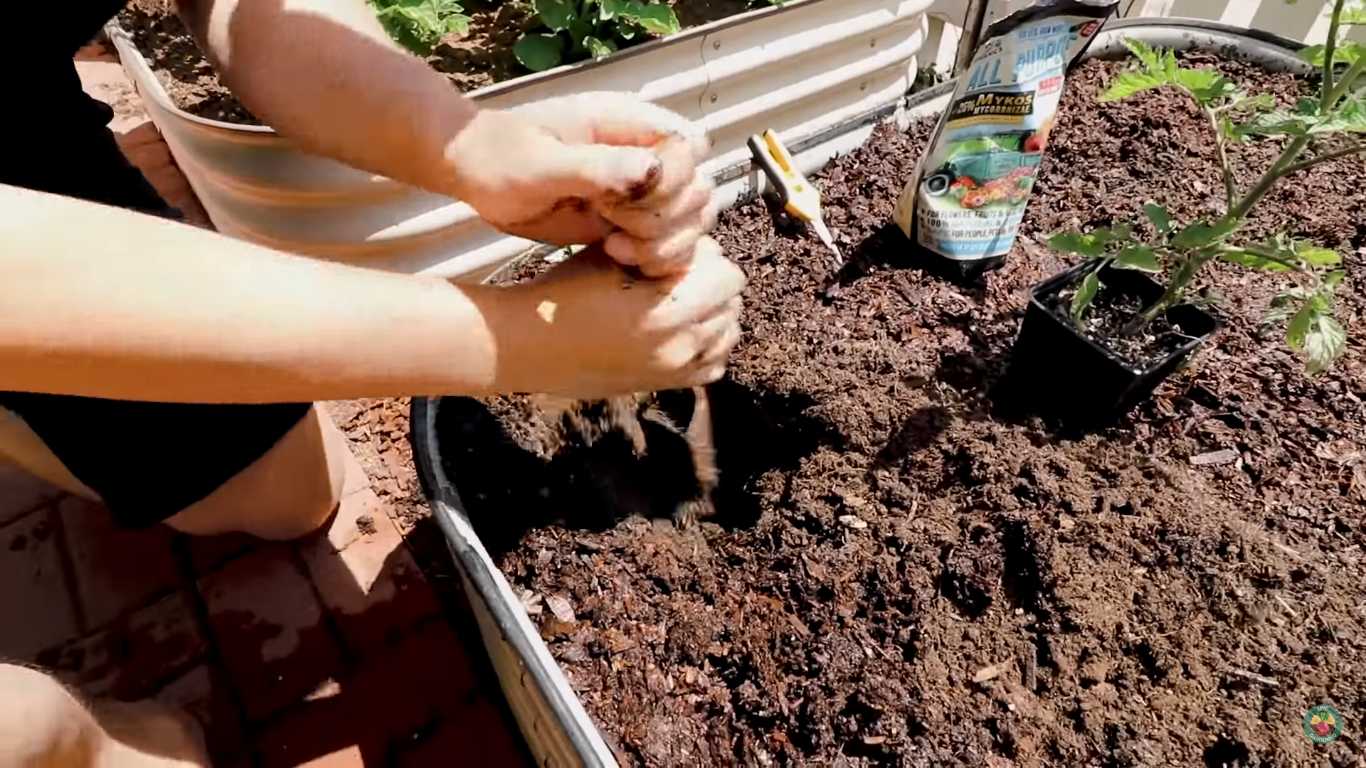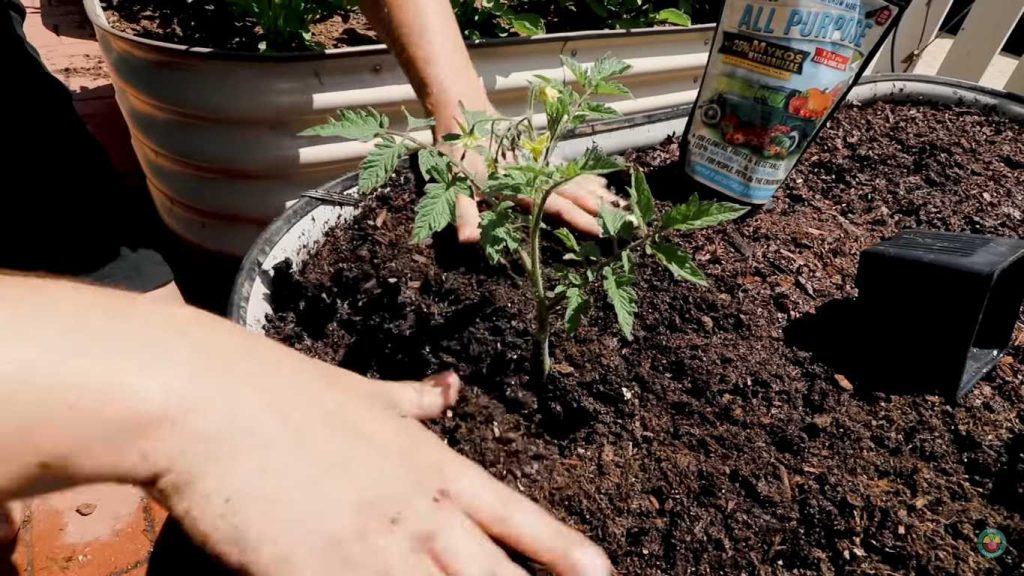In this article, we talk about when to transplant tomatoes plants, which varieties to choose and how to prepare the soil. Finally, we will give you some important tips.
When to transplant tomatoes plants
Transplanting tomatoes plants should be done in late spring after the danger of frost has passed. If you have some seedlings at home, you should transplant them when they have outgrown their current container, or when they are showing signs of stress such as yellowing leaves or stunted growth. This usually occurs 2-3 weeks after seed germination.

Here a step by step guide for transplanting
- Timing: Wait until 2-3 weeks after seed germination and after the danger of frost has passed in late spring.
- Prepare the new pots: Fill pots with quality potting soil, leaving an inch or two of space at the top to allow for watering.
- Transplant seedlings: Gently remove the seedlings from the original container, being careful not to damage the roots. Place the seedling into the new pot, filling the extra soil around the seedling to secure it in place.
- Watering: Water the seedlings thoroughly after transplanting.
- Light: Place the transplanted seedlings in a sunny location. If direct sun is too intense, place them in a location with bright, indirect light
- Monitoring: Monitor the seedlings for the first few days after transplanting and water if necessary. Be on the lookout for signs of stress such as yellowing leaves or stunted growth, and address them promptly.
Note: It’s a good idea to harden off the seedlings by gradually exposing them to outdoor conditions a few days before transplanting to minimize transplant shock.

Which varieties to choose
It’s important to carefully choose the variety of tomato before transplanting because different varieties have different growth habits and requirements. Some factors to consider include:
- Maturity: Different varieties mature at different rates, so choose a variety that will mature within your growing season.
- Space requirements: Some varieties are determinate, meaning they grow to a certain size and stop, while others are indeterminate, meaning they continue to grow and produce fruit throughout the growing season. Choose a variety that fits the space you have available.
- Climate: Some varieties are more heat-tolerant or cold-tolerant than others, so choose a variety that is well-suited to your climate.
- Disease resistance: Some varieties are more resistant to common tomato diseases such as early blight and late blight, so choose a variety that is resistant to the diseases that are prevalent in your area.
By carefully choosing the variety that best fits your growing conditions, you can ensure the success and productivity of your tomato transplant.
Finally, to ensure the success and productivity of your tomato transplant, remember to transplant seedlings at the right time, handle seedlings gently : be careful not to damage the roots when removing seedlings from the original container; use high-quality potting soil and fill new pots with quality potting soil to give the seedlings the best chance for healthy growth. After the transplanting, water the seedlings thoroughly to settle the soil and reduce transplant shock and monitor them for the first few days after transplanting and water if necessary.
Conclusion
We hope you enjoy this article where we talk about when transplanting tomato plants. As always, we advise using vegetable farming using sustainable methods. Use resources sensibly, including soil and water, and protect plants with environmentally friendly products.
